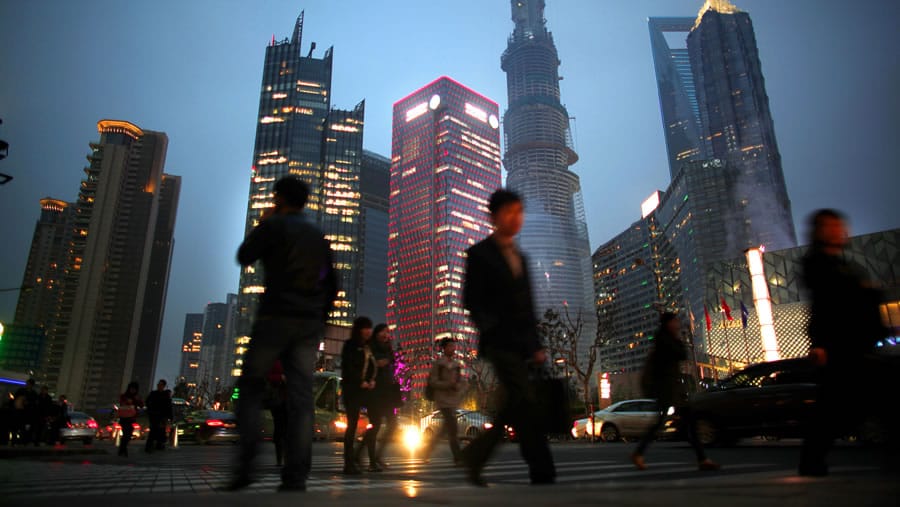
China Economic Report essay
The Chinese civilization is one of the oldest civilizations existing in the world, and is now more than three and a half thousand years old. The secret to such amazing longevity is largely predetermined by the peculiar nature of China’s socio-economic development since ancient times, as well as the unique culture and religion. However, an important factor in the survival of the Chinese civilization at all times was the ability to effectively use the competitive advantages of its economic and geographical situation.
Both in the past and the present, the ability to compete used to be particularly valuable for the successful development of the Chinese economy, which managed to survive two truly large-scale transformations in the 20th century – the formation of the PRC in the late 1940’s and the transition to the socialist path of development, as well as the age of reforms at the end of the 1970’s and opening to the outside world- in order to enter the 21st century as the most quickly growing economy. Starting with relatively low growth rates three decades ago, modern Chinese economy yields now only to the US economy by its size (The World Bank, 2013). In the last decades, China’s real gross domestic product has been growing by average of 10% annually, which means a doubling observed every 7-8 years (People’s Republic of China and the IMF, 2013). The final 16-fold increase in the national income during one generation cycle is historically unprecedented, and the fact that these improvements affect one-fifth of the world population emphasizes the tremendous scales of this achievement (The World Bank, 2013; People’s Republic of China and the IMF, 2013). Moreover, rapid integration and economic growth in China are now producing an increasingly large impact on the rest of the world economies.
Further in this paper, we aim at discussing China’s current economic processes in all their multiplicity and multidimensional character, basing on the historical background and the analysis of contemporary transformations in the world economy.
Historical background
During the first years of its existence, the PRC directed its efforts on eliminating the devastating effects of the civil war, and chose the model of orthodox Stalinism for putting the state on the path of economic growth. The main focus was on the development of heavy industry and forced collectivization of the agricultural sector. The ruling communist party measured its success only by the exceeding performance of five-year plans or bare quantitative indicators pointing to a rise in the total production volume, at the expense of quality and technological innovation (Smith and Mackerras, 2013; Dreyer, 2010). Thus, during the first five-year plan (1953-1957), the output of heavy industry in China increased by75%. At the same time, the by-products of this program were the absolute confusion in the economy, squandering of resources, including vast deforestation, siltation and overflowing, herbage destruction, and most severe starvation of the population which took nearly 30 million lives. Between 1961 and 1965, the policy of economic recovery provided the growth of industrial output by more than 17% per year and normalized the situation in agriculture, but was interrupted in 1966 by the beginning of Cultural Revolution, which again seriously undermined the foundations of the Chinese economy (Smith and Mackerras, 2013; Dreyer, 2010).
Although by the time China entered the United Nations and established of relations with the United States in 1971 the worst part of the history was left behind, the era of suffering and fear ended only with the death of Mao in 1976 (Smith and Mackerras, 2013). The political course started to change after 1978. Deng Xiaoping’s reforms of agriculture and industry included the privatization of village and encouraging small enterprises, as well as significant tax cuts, which led to the gradual elimination of imbalances between the volume of production in the light and heavy industries together with the growth of the service sector and increase the volume of foreign trade (Liew, 1998). In 1992, the GDP growth made 13%, which was the highest rate of GDP growth in the world, and generally didn’t make less than 10% for over two decades (People’s Republic of China and the IMF, 2013). Thus, entering the 21st century, China was the state with a high rate of economic development and a rapidly rising standard of living.
A fundamentally important external factor which largely has determined the contemporary prospects of China’s socio-economic development, the transformation of its strategies and shift to market economy, as well as the strengthening of its economic influence in the world, was the policy for integration, and the PRC’s entrance to the WTO in November 2001 (Dreyer, 2010). Already the first two years since the entry demonstrated that a sharp increase in the volume of foreign trade – from $510 billion dollars in 2001 to $851 billion in 2003, which made China ranked 4th in the world by foreign trade index, yielding only to the U.S., EU and Japan (People’s Republic of China and the IMF, 2013). Further, China established close relationships with more than 182 countries, having signed interstate trade agreements with 80 of them. Already by 2009 the country was ranked 3rd in the world (after the U.S. and Japan) by the size of nominal GDP; now, China is the second largest economy (The World Bank, 2013). However, some of the methods to reach this results may be seriously questioned which is vividly proved by the problems China faced in the last two years.

